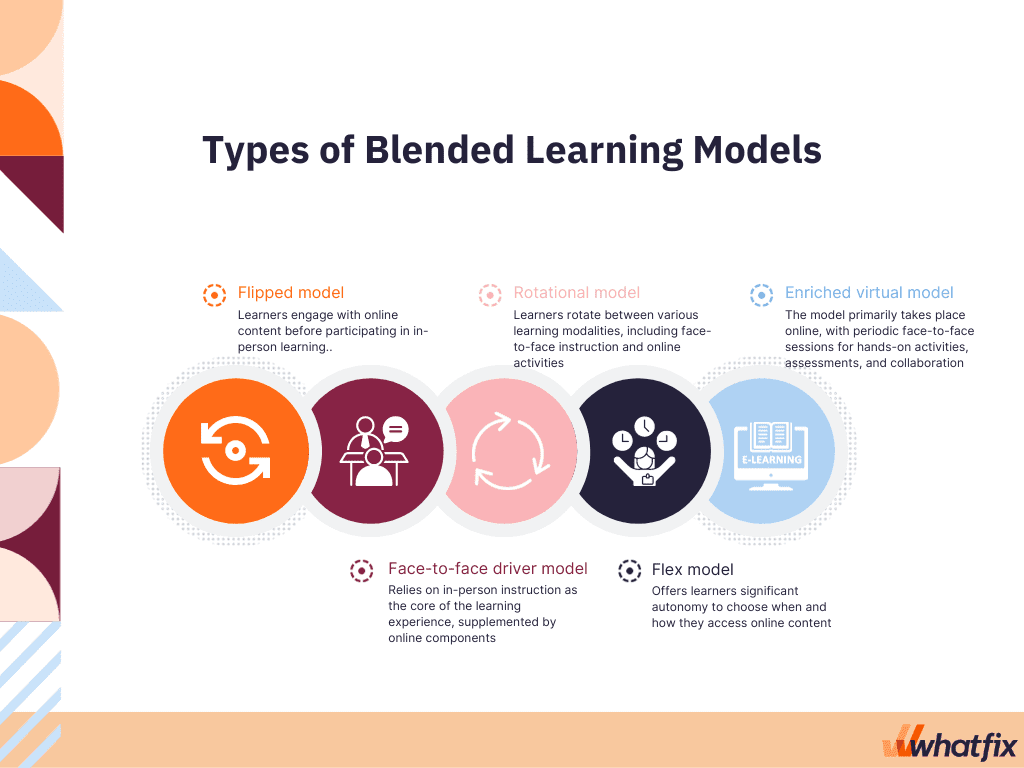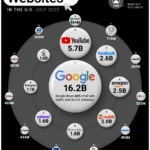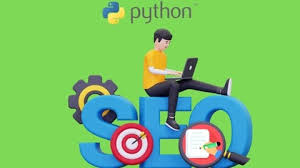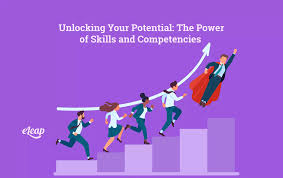Introduction: The Evolution of Corporate Learning in the Digital Age
The corporate education landscape has undergone a seismic shift over the past decade. Traditional classroom-based training sessions are rapidly becoming obsolete as organizations worldwide embrace innovative learning methodologies. At the forefront of this transformation stands blended learning – a sophisticated approach that combines the best elements of face-to-face instruction with the flexibility and accessibility of online learning platforms. This comprehensive guide explores how blended learning models are revolutionizing corporate education and why forward-thinking organizations are investing heavily in these transformative educational frameworks.
According to recent data from LinkedIn Learning (https://www.linkedin.com/learning/), 94% of employees would stay at a company longer if it invested in their career development. This statistic underscores the critical importance of implementing effective learning strategies within corporate environments. As we navigate through 2024, the integration of online education learning with traditional methodologies has become not just an option but a necessity for organizations seeking to maintain competitive advantages in increasingly dynamic markets.
Understanding Blended Learning: A Comprehensive Overview
Blended learning represents a pedagogical approach that strategically combines synchronous in-person instruction with asynchronous online learning courses and digital resources. This hybrid model leverages technology to create personalized, flexible, and engaging learning experiences that cater to diverse learning styles and organizational needs. Unlike purely traditional or entirely online approaches, blended learning harnesses the strengths of both methodologies while mitigating their respective limitations.
The concept of blended learning isn’t entirely new, but its application in corporate settings has evolved dramatically. Modern blended learning frameworks incorporate sophisticated learning management systems, interactive multimedia content, virtual collaboration tools, and data analytics capabilities that were unimaginable just a few years ago. Organizations implementing these systems through platforms like Coursera (https://www.coursera.org/) and edX (https://www.edx.org/) are witnessing unprecedented improvements in employee engagement, knowledge retention, and skill application.
The Core Components of Effective Blended Learning Models
Successful blended learning implementations typically incorporate several essential elements:
- Face-to-face interaction: Traditional classroom sessions, workshops, and seminars that facilitate direct human connection
- Digital learning modules: Self-paced online learning courses accessible through dedicated platforms
- Collaborative technologies: Virtual meeting spaces, discussion forums, and project management tools
- Assessment mechanisms: Both formative and summative evaluation tools that track progress and competency development
- Personalization capabilities: Adaptive learning pathways that adjust based on individual performance and preferences
Why Blended Learning is Transforming Corporate Education
Flexibility and Accessibility
One of the most compelling advantages of blended learning models is their inherent flexibility. Employees can access free online learning platforms and resources at their convenience, eliminating geographical constraints and scheduling conflicts that plague traditional training programs. Whether an employee is working from headquarters, remotely, or traveling internationally, they maintain consistent access to learning materials through my online learning portals.
Companies utilizing platforms like LinkedIn Learning (https://www.linkedin.com/learning/) report that employees complete 50% more courses when given the flexibility to learn at their own pace compared to rigid, scheduled training sessions. This accessibility proves particularly valuable for global organizations with distributed workforces across multiple time zones.
Cost-Effectiveness and Scalability
Traditional corporate training programs often require significant investments in physical infrastructure, travel expenses, instructor fees, and printed materials. Blended learning models substantially reduce these costs while simultaneously increasing reach and scalability. Organizations can leverage free online courses and affordable subscription-based online learning platforms to deliver high-quality education to thousands of employees simultaneously.
According to research published by the Brandon Hall Group (https://www.brandonhall.com/), companies that implement blended learning strategies reduce training costs by an average of 50-70% while improving knowledge retention by 25-60%. These compelling financial benefits make blended learning particularly attractive for organizations operating under budgetary constraints or seeking to maximize return on investment in human capital development.
Enhanced Engagement and Knowledge Retention
Blended learning addresses a fundamental challenge in corporate education: maintaining learner engagement over extended periods. By incorporating diverse content delivery methods – including video lectures, interactive simulations, gamified modules through platforms like Kahoot (https://kahoot.com/), and hands-on practice sessions – blended models prevent the monotony and disengagement associated with single-method approaches.
Neuroscience research consistently demonstrates that varied learning experiences strengthen neural pathways and enhance long-term memory formation. When employees engage with content through multiple modalities – watching instructional videos, participating in discussion forums, completing practical exercises, and attending live sessions – they develop deeper understanding and more durable competencies.
Popular Blended Learning Models for Corporate Settings
The Rotation Model
The rotation model involves employees alternating between different learning stations or modalities on a fixed schedule. In corporate contexts, this might mean spending Monday mornings in instructor-led workshops, dedicating Tuesday and Wednesday to self-paced online learning courses, participating in Thursday collaborative projects, and engaging in Friday assessment and reflection activities.
This structured approach works exceptionally well for organizations implementing comprehensive training programs such as CPA online learning (https://www.cpaaustralia.com.au/) or technical certifications requiring mastery of complex material. The predictable rhythm helps employees plan their schedules while ensuring balanced exposure to various learning experiences.
The Flex Model
The flex model prioritizes online learning platforms as the primary content delivery mechanism, with face-to-face support available on an as-needed basis. Employees progress through digital curricula at their own pace, accessing instructor assistance, coaching, or collaborative sessions when they encounter difficulties or require additional guidance.
This model proves particularly effective for experienced professionals pursuing advanced certifications or specialized skill development, such as learning Python (https://www.python.org/) or machine learning competencies. Platforms like Codecademy (https://www.codecademy.com/) and Udemy (https://www.udemy.com/) excel at supporting this approach through comprehensive digital resources complemented by mentor support.
The Enriched Virtual Model
In the enriched virtual model, employees complete the majority of coursework through online education learning platforms but attend mandatory face-to-face sessions at regular intervals. These in-person gatherings focus on high-value activities that benefit from direct interaction: complex problem-solving workshops, team-building exercises, hands-on practice with specialized equipment, or networking opportunities.
This model has gained tremendous popularity among organizations with remote workforces or distributed teams. Companies can maintain organizational culture and interpersonal connections through periodic gatherings while leveraging the efficiency and accessibility of digital learning for routine content delivery.
The Flipped Classroom Approach
The flipped classroom model inverts traditional learning sequences. Employees first encounter new concepts through pre-recorded lectures, reading materials, or interactive modules available via online learning hub platforms. Subsequently, face-to-face sessions focus exclusively on application, discussion, problem-solving, and collaborative activities that deepen understanding.
This approach maximizes the value of precious in-person time by reserving it for activities that genuinely benefit from human interaction and expert facilitation. Organizations implementing flipped classroom models for initiatives like language learning online or learning Spanish online (https://www.duolingo.com/) report significantly improved fluency outcomes compared to traditional language instruction methods.
Implementing Blended Learning: Strategic Considerations
Assessing Organizational Readiness
Before implementing blended learning models, organizations must honestly evaluate their technological infrastructure, cultural readiness, and resource availability. Critical assessment questions include:
- Do employees have reliable access to devices and internet connectivity for online learning?
- Does organizational culture support self-directed learning and digital literacy?
- Are managers prepared to facilitate blended learning experiences rather than merely delivering content?
- What learning management systems currently exist, and do they support blended approaches?
Organizations like Flinders Learning Online (https://www.flinders.edu.au/) and Online Learning NSW (https://education.nsw.gov.au/) provide excellent case studies demonstrating how institutions successfully navigate these readiness assessments before launching comprehensive blended learning initiatives.
Selecting Appropriate Technology Platforms
The online learning platform selection process significantly influences blended learning success. Organizations must evaluate numerous options, including:
- Comprehensive learning management systems: Platforms offering course creation, delivery, assessment, and analytics capabilities
- Specialized content providers: Services like O’Reilly Online Learning (https://www.oreilly.com/) offering extensive libraries of professional development resources
- Collaboration tools: Technologies facilitating synchronous and asynchronous communication among learners and instructors
- Assessment and credentialing platforms: Systems that validate learning achievements and issue recognized certifications
Many organizations adopt multi-platform strategies, combining general-purpose best online learning platforms with specialized solutions for specific competencies. For instance, they might use LinkedIn Learning for general professional development while leveraging IXL Learning (https://www.ixl.com/) for foundational skills development or Alison Online Learning (https://alison.com/) for certification programs.
Designing Engaging Blended Curricula
Effective blended learning requires thoughtful instructional design that leverages each modality’s unique strengths. Key design principles include:
- Clear learning objectives: Explicitly articulated outcomes that guide content selection and assessment design
- Logical content sequencing: Carefully planned progression from foundational concepts to advanced applications
- Appropriate modality matching: Delivering each content element through the most effective medium
- Meaningful assessments: Evaluation mechanisms that authentically measure competency development
- Continuous feedback loops: Regular opportunities for learners to gauge progress and adjust strategies
Organizations developing specialized training programs – whether CPA Australia (https://www.cpaaustralia.com.au/) certification preparation, technical skills like Python learning online, or soft skills development – benefit tremendously from partnering with instructional design experts who understand adult learning principles and blended methodology best practices.
Ensuring Accessibility and Inclusivity
Truly effective blended learning models accommodate diverse learner needs, preferences, and circumstances. Organizations must proactively address potential barriers to participation:
- Language considerations: Providing multilingual content or translation services, perhaps leveraging tools like Google Translate (https://translate.google.com/) or Arabic to English translation online services
- Disability accommodations: Ensuring digital content meets WCAG accessibility standards and providing alternative formats
- Technology access: Offering equipment lending programs or alternative arrangements for employees lacking reliable devices or connectivity
- Learning differences: Incorporating varied content formats, pacing options, and assessment methods that accommodate different cognitive styles
Platforms like Widgit Online (https://www.widgitonline.com/) specialize in making digital learning accessible to individuals with learning differences, offering valuable resources for organizations committed to inclusive education.
Measuring Blended Learning Effectiveness
Key Performance Indicators
Organizations investing in blended learning models require robust measurement frameworks to evaluate return on investment and identify improvement opportunities. Critical metrics include:
- Completion rates: Percentage of employees finishing assigned learning modules or programs
- Knowledge acquisition: Pre- and post-assessment scores demonstrating learning gains
- Skill application: Observable workplace performance improvements attributable to training
- Employee satisfaction: Learner feedback regarding experience quality and relevance
- Business impact: Organizational outcomes like productivity gains, error reduction, or innovation increases
Advanced online learning systems increasingly incorporate sophisticated analytics dashboards that track these metrics in real-time, enabling continuous program optimization. Organizations using platforms like Dimensions Online or TUM Online (https://www.tum.de/) benefit from integrated analytics that correlate learning activities with performance outcomes.
Continuous Improvement Processes
The most successful blended learning implementations embrace iterative refinement based on data analysis and stakeholder feedback. Effective continuous improvement processes typically include:
- Regular learner surveys: Gathering systematic feedback about content relevance, platform usability, and overall satisfaction
- Performance analytics review: Examining completion rates, assessment scores, and engagement patterns to identify content or design issues
- Manager input sessions: Consulting supervisors about observable skill application and workplace performance changes
- Expert content audits: Periodically reviewing materials to ensure accuracy, relevance, and alignment with evolving industry standards
- Technology platform evaluations: Assessing whether current systems adequately support learning objectives or require upgrades
Organizations affiliated with continuous improvement frameworks like those promoted by Evidence for Learning (https://www.evidenceforlearning.org.au/) demonstrate superior outcomes compared to those implementing static, unchanging programs.
Industry-Specific Applications of Blended Learning

Financial Services and Professional Certification
The financial services sector has enthusiastically adopted blended learning for professional development and regulatory compliance training. Organizations preparing employees for demanding certifications like the CPA designation increasingly rely on comprehensive programs combining CPA my online learning portals with intensive in-person review sessions and practice examinations.
CPA Australia (https://www.cpaaustralia.com.au/) exemplifies this approach, offering candidates access to extensive digital resources, self-assessment tools, and periodic face-to-face workshops that prepare them for challenging certification examinations. This blended model accommodates working professionals’ scheduling constraints while maintaining the rigor necessary for professional credentialing.
Technology and Software Development
Technology companies face unique challenges in keeping workforce skills current amid rapid innovation cycles. Blended learning models prove invaluable for delivering timely training on emerging technologies, programming languages, and development methodologies.
Companies teaching foundational competencies like learning Python or advanced specializations in artificial intelligence increasingly combine free online courses from providers like Coursera and edX with hands-on coding bootcamps, pair programming sessions, and mentorship programs. This combination ensures theoretical understanding while developing practical skills through applied experience.
Many technology firms also leverage AI courses online free resources (https://www.coursera.org/courses?query=artificial%20intelligence) to democratize access to cutting-edge knowledge, supplementing these materials with internal expert-led sessions that address company-specific applications and challenges.
Healthcare and Medical Education
Healthcare organizations face stringent continuing education requirements while managing demanding clinical schedules that limit traditional training opportunities. Blended learning models address this challenge by delivering theoretical content through online learning platforms that clinicians access during convenient times, reserving precious in-person sessions for hands-on skill development, simulation exercises, and collaborative case discussions.
Institutions like Baycare Online Learning Center (https://baycare.org/) demonstrate how healthcare systems successfully implement blended approaches for everything from regulatory compliance training to advanced clinical skill development, significantly improving accessibility while maintaining educational quality and patient safety standards.
Language Education and Cross-Cultural Training
Global organizations require employees to develop language proficiency and cultural competency for international assignments and collaboration. Blended models combining language learning online platforms with immersive conversation practice and cultural workshops deliver superior outcomes compared to single-method approaches.
Programs for learning Spanish online, English learning online, or other languages typically leverage platforms like Languages Online (https://www.education.vic.gov.au/languagesonline/) for foundational grammar and vocabulary development, complemented by conversation clubs, cultural immersion experiences, and real-world application opportunities that accelerate fluency development.
K-12 and Higher Education Models Informing Corporate Approaches
Corporate learning professionals increasingly draw inspiration from innovations in traditional educational settings. Platforms like Scholastic Learning Zone (https://www.scholastic.com/), Maths Online resources, and online learning games for 5 year olds demonstrate engagement strategies and pedagogical approaches adaptable to adult learning contexts.
Similarly, higher education institutions like Flinders Learning Online and Online Learning Qld Health (https://www.health.qld.gov.au/) pioneer sophisticated blended models that corporate trainers adapt for workforce development initiatives. The online learning agreement Erasmus framework (https://erasmus-plus.ec.europa.eu/) offers valuable insights into structuring international learning experiences that combine digital and in-person elements.
Overcoming Common Blended Learning Challenges
Addressing Technology Barriers
Despite widespread digital adoption, technology access and literacy remain significant obstacles for some employees. Organizations must proactively address these barriers through:
- Comprehensive onboarding: Providing thorough orientation to online learning platform features and navigation
- Technical support resources: Establishing help desks or support systems addressing technology issues quickly
- Alternative access options: Offering equipment lending programs or designated learning spaces with necessary technology
- Simplified interfaces: Selecting user-friendly platforms that minimize unnecessary complexity
- Multi-device optimization: Ensuring content accessibility across computers, tablets, and smartphones
Platforms designed with user experience as a priority, such as Doodle Learning or Activate Learning Online (https://www.activatelearning.ac.uk/), typically achieve higher adoption rates and user satisfaction scores than more complex alternatives.
Maintaining Learner Motivation and Engagement
Self-directed online learning requires sustained motivation that many employees struggle to maintain without external accountability structures. Effective strategies for preserving engagement include:
- Gamification elements: Incorporating points, badges, leaderboards, and challenges through platforms like Kahoot or IXL
- Social learning opportunities: Facilitating peer interaction through discussion forums, study groups, and collaborative projects
- Regular touchpoints: Scheduling periodic check-ins, progress reviews, and encouragement from managers or learning facilitators
- Relevant, practical content: Ensuring materials directly address real workplace challenges and career development goals
- Recognition and rewards: Acknowledging learning achievements through certificates, public recognition, or career advancement opportunities
Research from platforms like College for Adult Learning (https://www.cal.edu.au/) demonstrates that adults maintain higher engagement when they perceive clear connections between learning activities and professional advancement or practical problem-solving.
Balancing Standardization and Personalization
Organizations face inherent tension between standardized curricula ensuring consistent foundational competencies and personalized learning pathways accommodating individual needs, interests, and skill levels. Sophisticated blended learning models address this challenge through:












